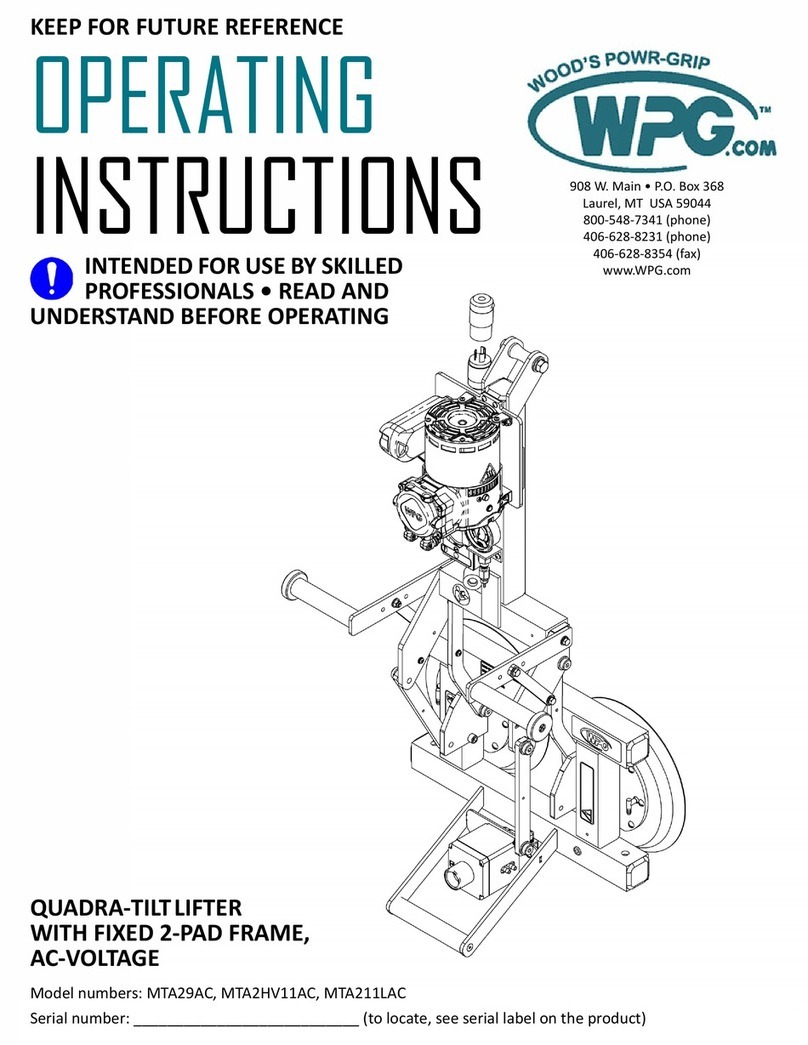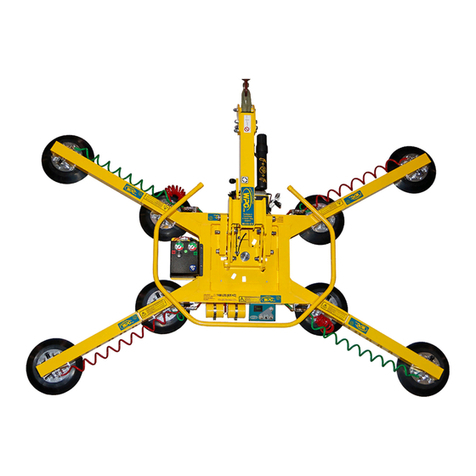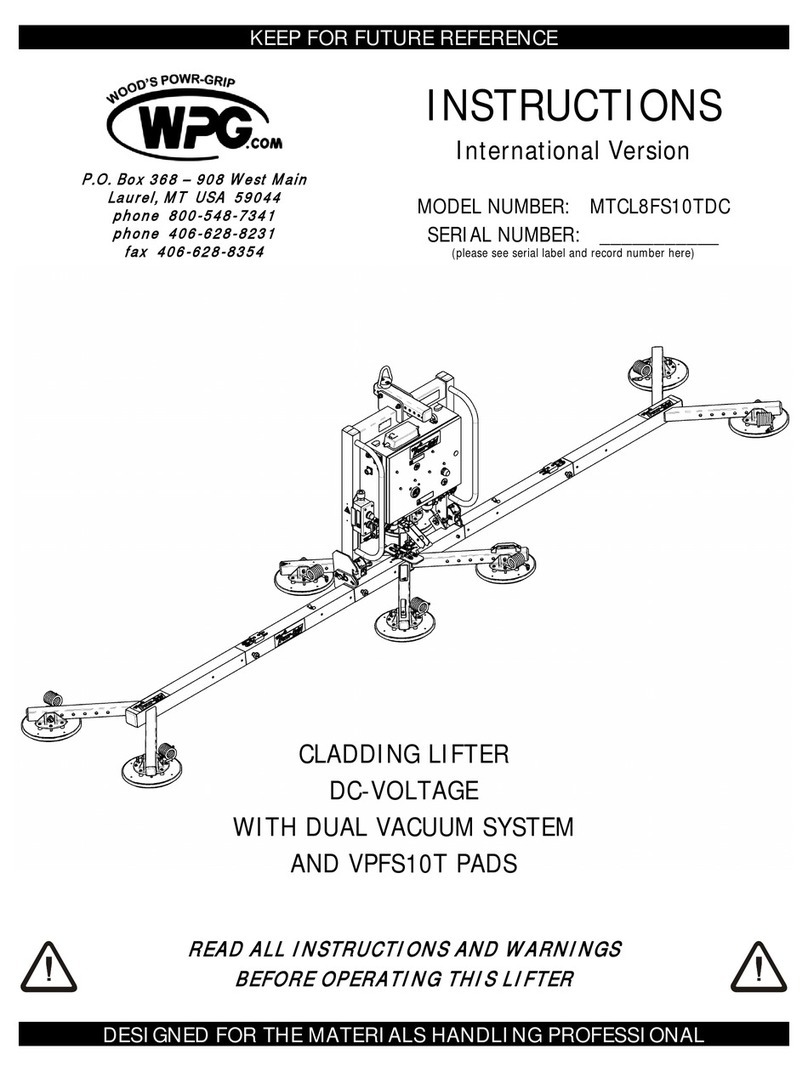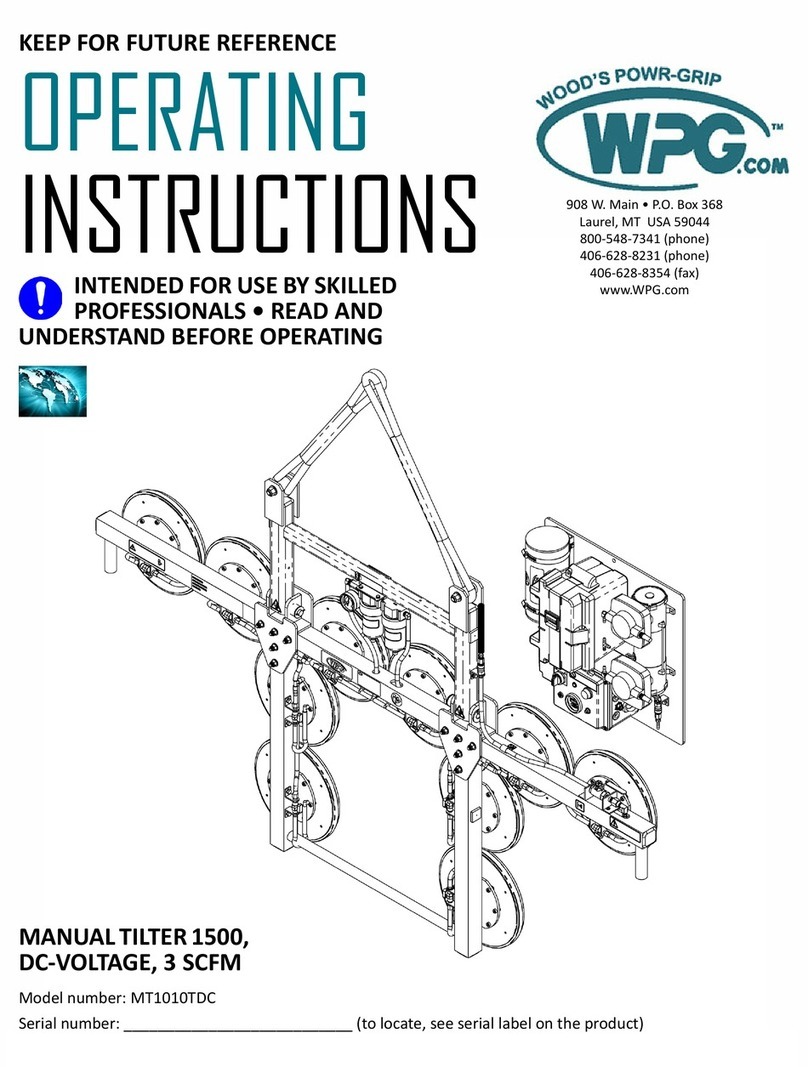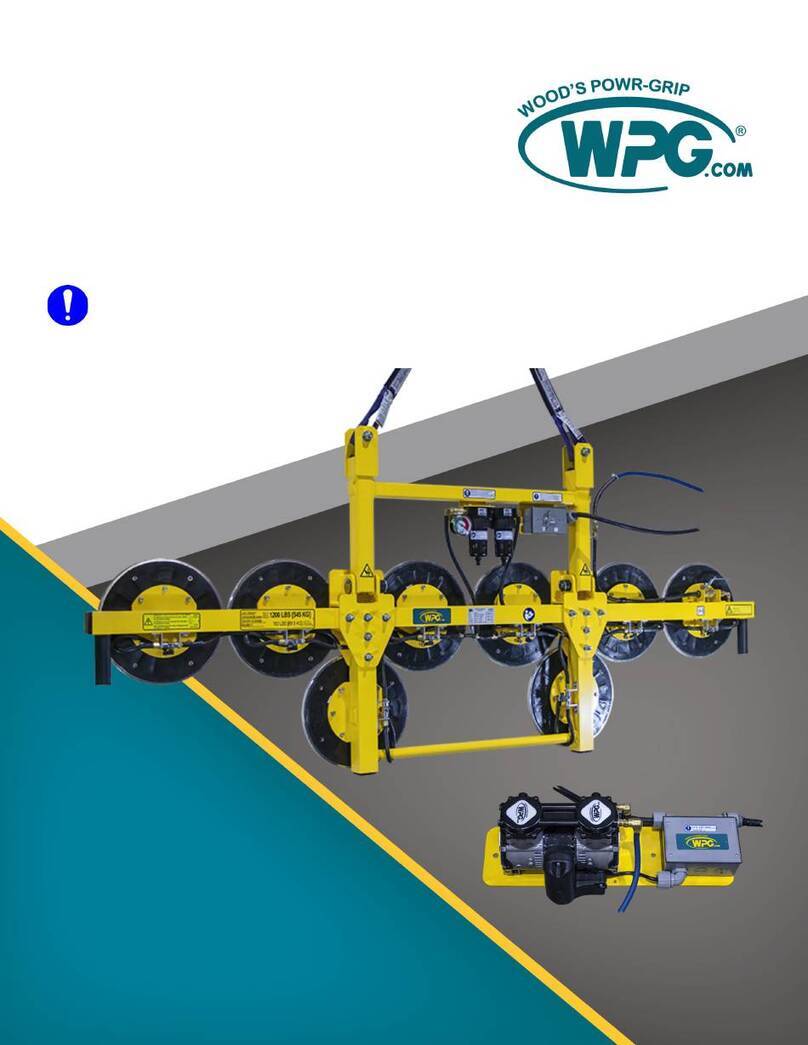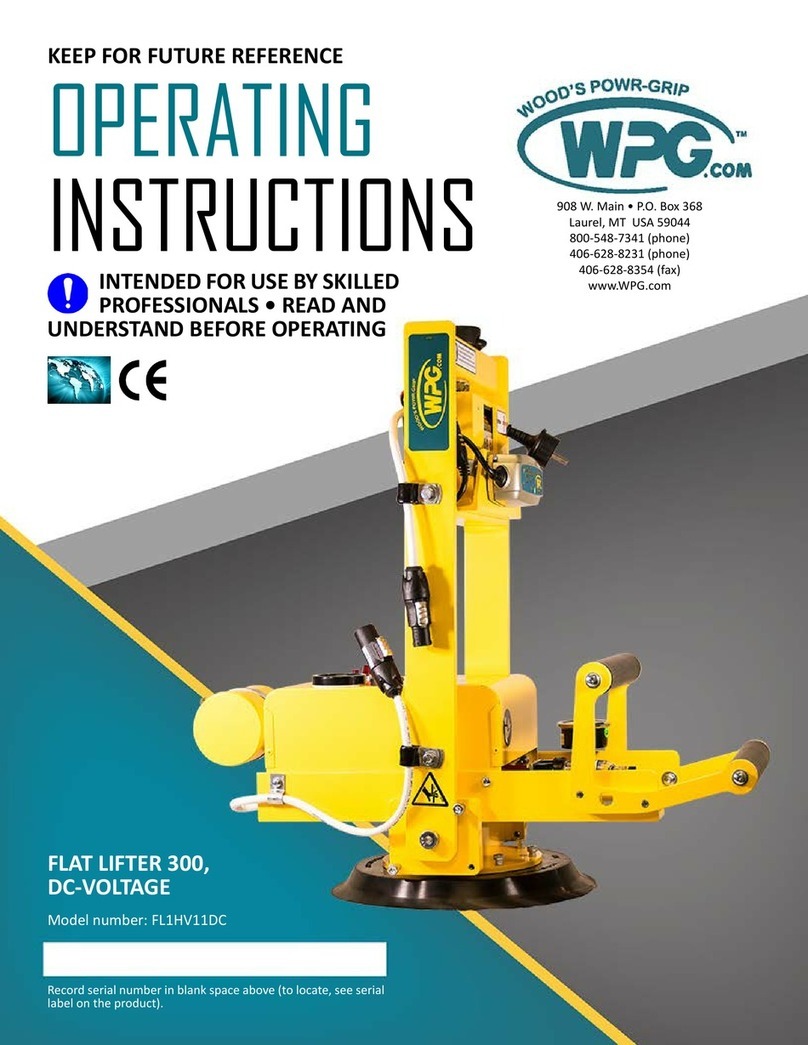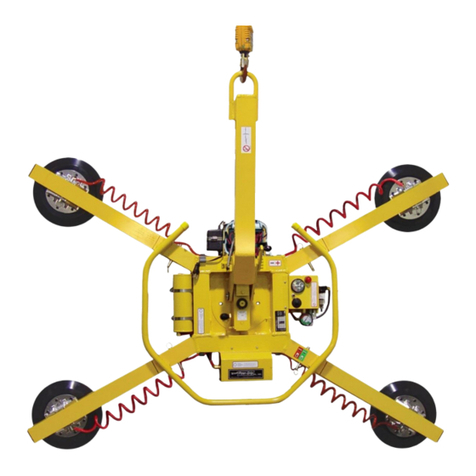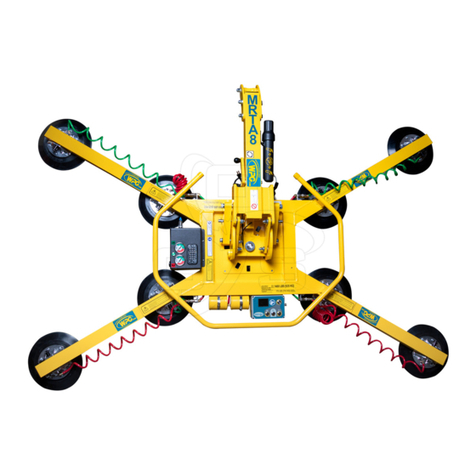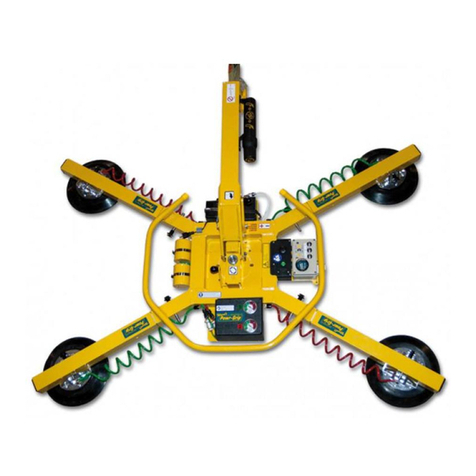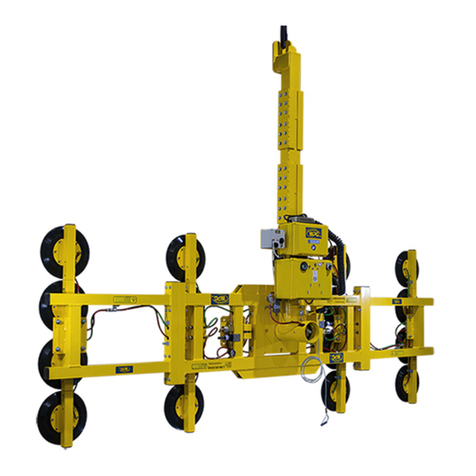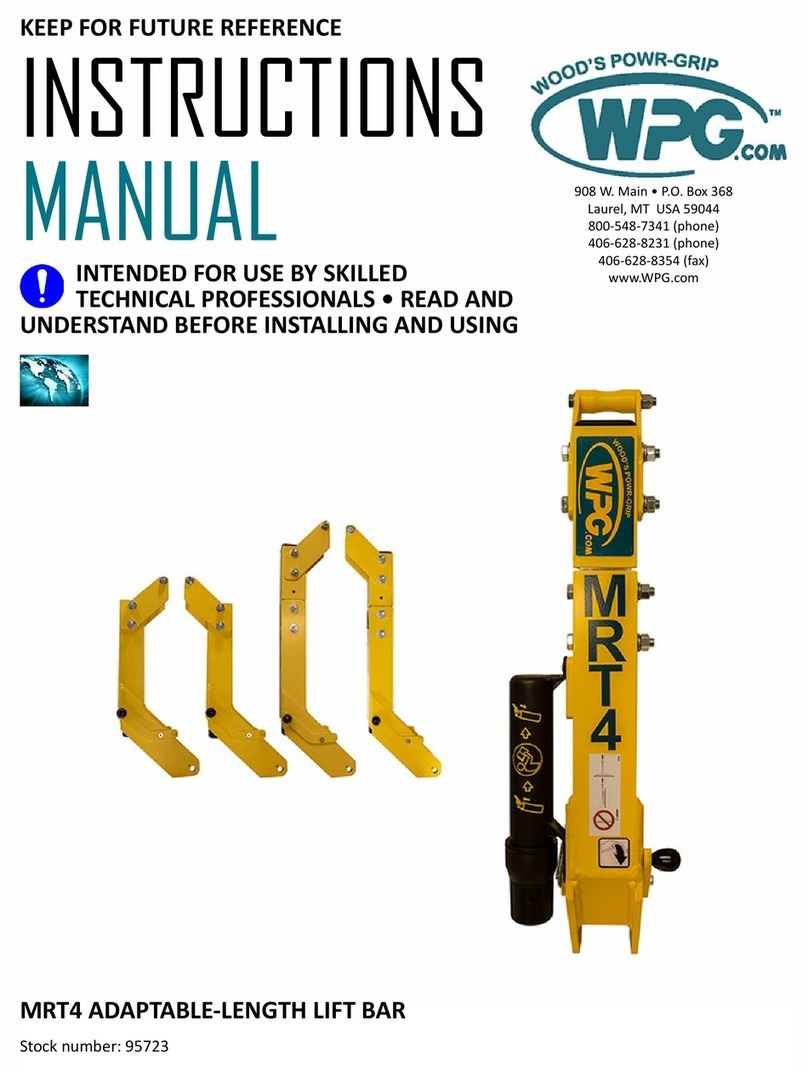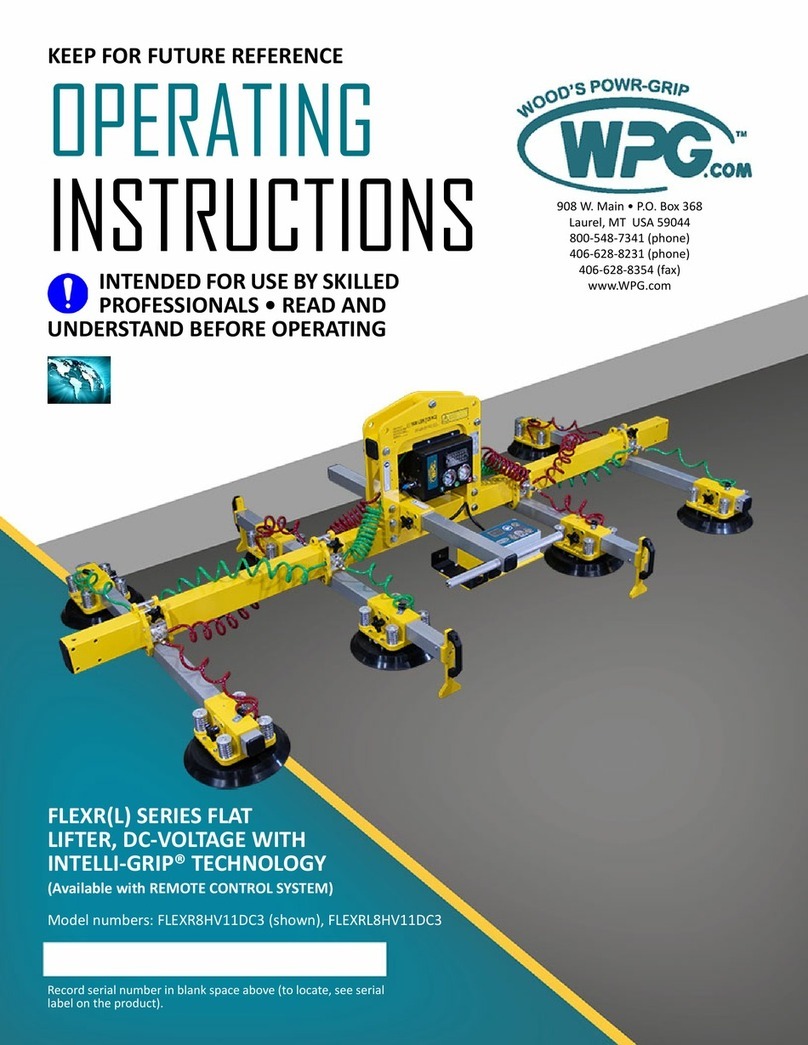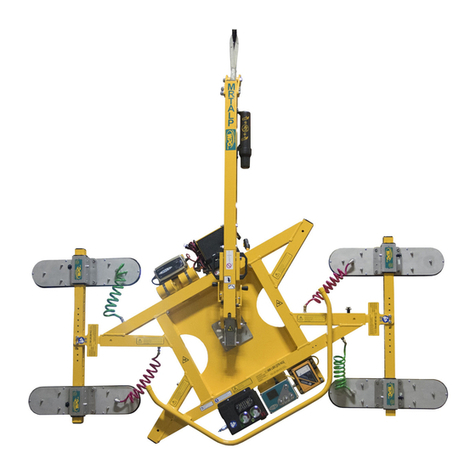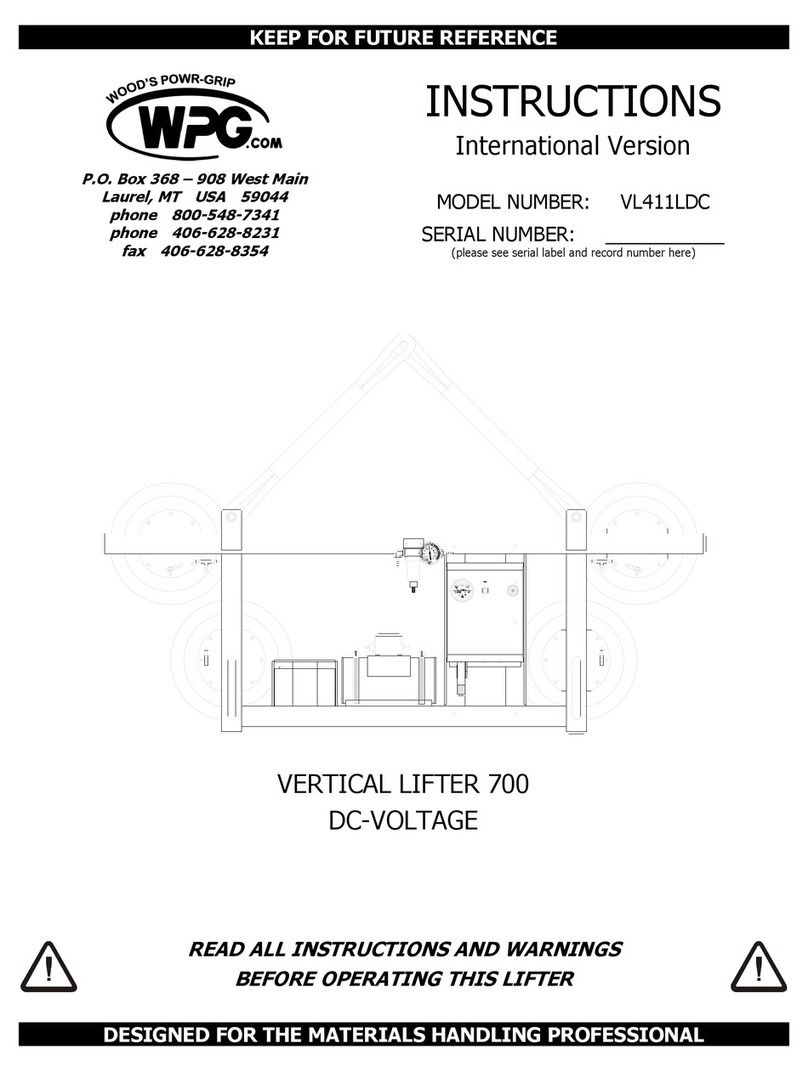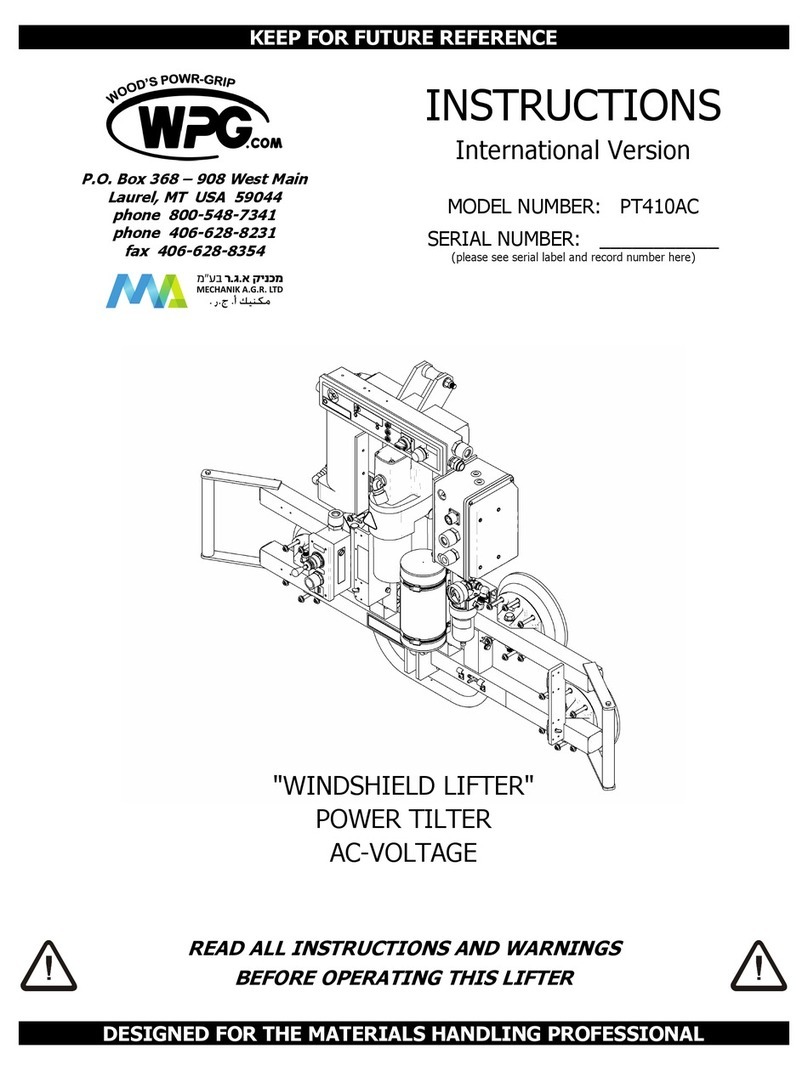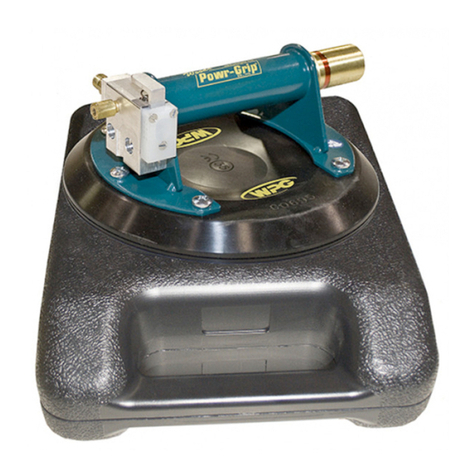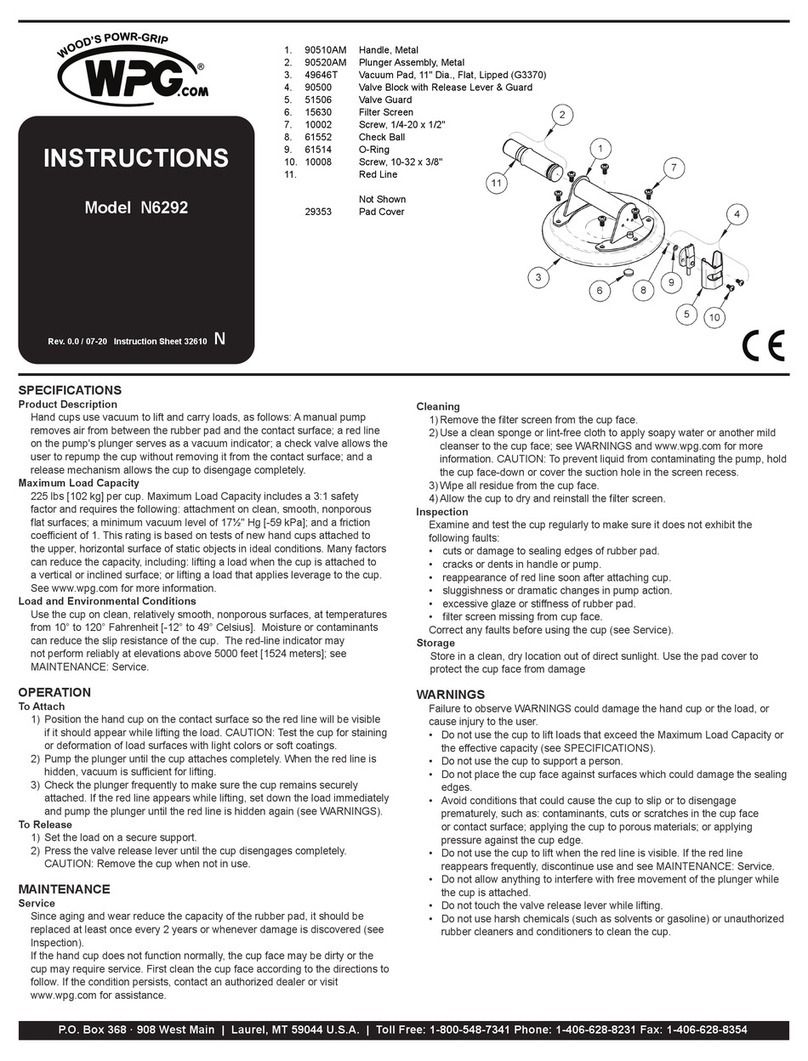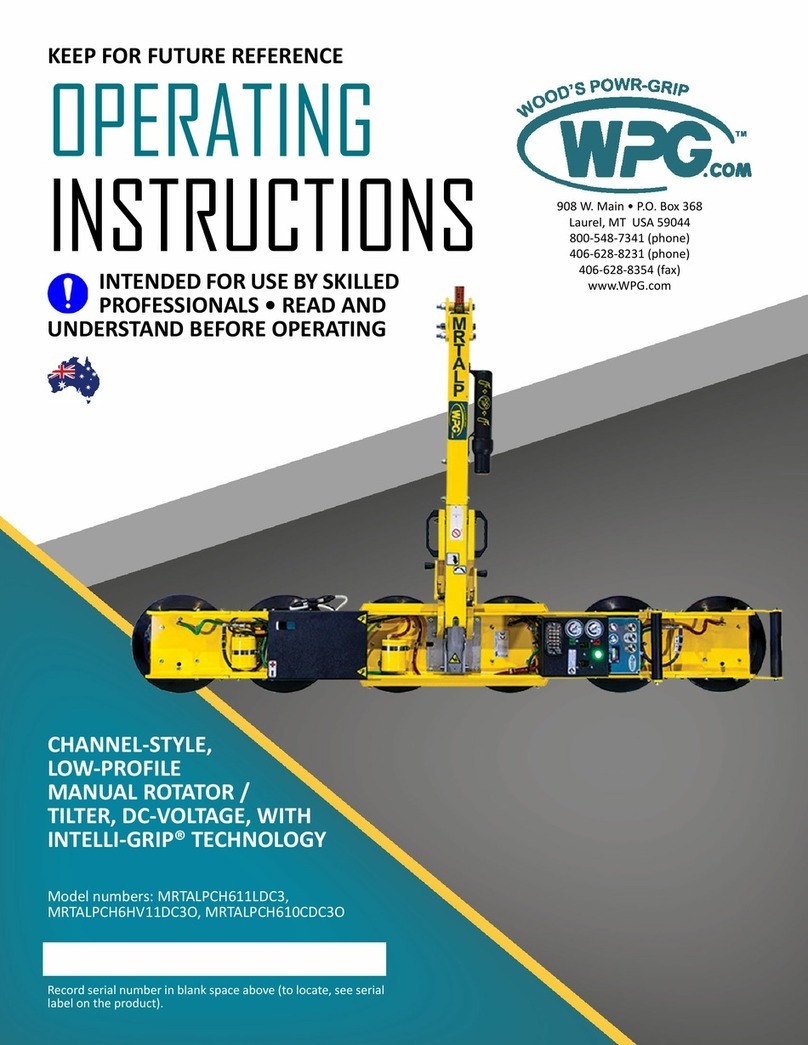
Product
Description
Designed for use with hoisting equipment, P1-02DC3 lifters support loads using vacuum and manipulate
loads using manual 180° rotation and manual 90° motions.
Model Number P110C02DC3 P110T02DC3 P1HV1102DC3 P111L02DC3 P11216L02DC3
Vacuum Pads:1
1...... Available with other rubber compounds for special purposes (see www.wpg.com).
(2 each, standard rubber)
10" [25 cm]
nom. diameter,
concave
(Model G0750)
10" [25 cm]
nom. diameter,
w/replaceable ring
(Model VPFS10T2
2...... Standard with replaceable sealing rings for rough or textured surfaces (see “REPLACEMENT PARTS”).
)
10" [25 cm]
nom. diameter,
lipped
(Model HV11)
11" [28 cm]
nom. diameter,
lipped
(Model G3370)
12" x 16"
[31 cm x 41 cm]
nom. diimensions,
lipped
(Model RF1216)
Pad Spread:
(to outer edges)
23" x 10"
[59 cm x 25 cm]
25" x 11¾"
[64 cm x 30 cm]
24" x 11"
[61 cm x 28 cm]
25" x 12"
[64 cm x 30 cm]
25½" x 16½"
[65 cm x 42cm]
Maximum Load
Capacity3
3...... The Maximum Load Capacity is rated at a vacuumof 16" Hg [-54 kPa] on clean, smooth, nonporous flat surfaces with a friction coefficient of 1. Pad
compound, load rigidity, strength, surface conditions, overhang, angle, center of gravity and temperature can also affect the lifting capacity. A “qualified
person” should evaluate the effective lifting capacity for each use (see definition under “Rated Load Test”).
-------------------------------------- (standard and European ratings) -------------------------------------------
Standard Rating — Per-Pad 150 lbs [68 kg] 150 lbs [68 kg] 150 lbs [68 kg] 175 lbs [80 kg] N/A
Standard Rating — Total 300 lbs [135 kg] 300 lbs [135 kg] 300 lbs [135 kg] 350 lbs [160 kg] N/A
150 lbs [68 kg]
300 lbs [135 kg]
Lifter
Weight -------------------------------------- 85 lbs [39 kg] ------------------------------------------- 95 lbs [43 kg]
Power System 12 volts DC, 5.5 amps
Battery Capacity 7 amp-hours
Rotation
Capability Manual, 180°, with latching at each ¼ turn (when required)
Tilt
Capability Manual, 90°, with automatic locking in vertical position
Product
Options
Available with Remote Control System – FCC, CE and ICC certified.
See separate instructions about other options.
Operating
Elevation Up to 6,000' [1,828 m]
Operating
Temperatures 32° — 104° F [0° — 40° C]
Service Life 20,000 lifting cycles, when used and maintained as intended4
4...... Vacuum pads, filter elements and other wear-out items are excluded.
Software Version Intelli-Grip®7.6
ASME Standard BTH-1 Design Category "B", Service Class "0"
Troubleshooting Guide5
5...... To view this guide, click the link at right. Additionally, you can search for your lifter's Model Number at www.wpg.com and select the “Troubleshooting” link
on the product page.
TST-021_DC3_REV_2018-023
Rev 2.2/12-21 P1-02DC3: #351223
SPECIFICATIONS
On construction sites, a secondary positive holding device(eg, load sling)
is required to achieve theStandard Ratings for thelifters above.
h< Rating — Per-Pad
h< Rating — Total












